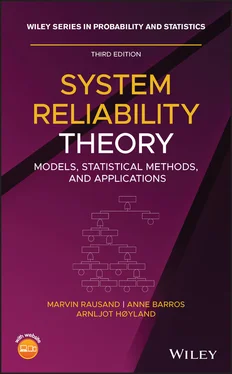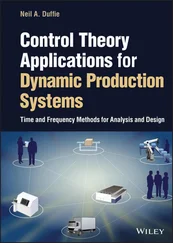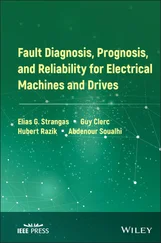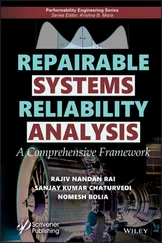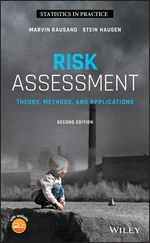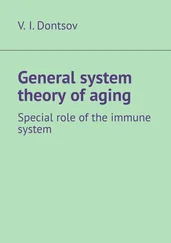This section highlights some achievements in the history of system reliability starting from the 1930s. We realize that our presentation is biased because we put too much focus on activities in Europe and in the United States. In addition, we have included mainly events and books that have influenced our own learning and understanding of system reliability. The development of reliability theory has been strongly influenced by a series of accidents and catastrophic failures. Some of these are mentioned, but you may find that we have missed many important accidents.
Some of the achievements mentioned in this section may be difficult to comprehend fully at this stage, and it may therefore be wise to postpone the reading of this section until you have delved deeper into the subject.
At the beginning of the 1930s, Walter Shewhart , Harold F. Dodge , and Harry G. Romig laid down the theoretical basis for utilizing statistical methods in quality control of industrial products, but such methods were not used to any great extent until the beginning of World War II. Products that were composed of a large number of parts often failed, despite the fact that they were made of individual high‐quality components.
An important achievement was made in the 1930s by the Swedish professor Waloddi Weibull (1887–1979) during his studies of the strength of materials. In Weibull (1939), he laid the basis for one of the most important probability distributions in reliability theory, the Weibull distribution (Weibull 1951).
It is often claimed that the first quantitative system reliability assessment can be attributed to Robert Lusser (1899–1969). He was a German engineer and aircraft designer who took part in several well‐known Messerschmitt and Heinkel designs during World War II. During the war, a group in Germany was working under Wernher von Braun developing the V‐1 missile, but the 10 first V‐1 missiles were all fiascos. In spite of attempts to provide high‐quality parts and careful attention to details, all the first missiles either exploded on the launching pad or landed “too soon” (in the English Channel). Robert Lusser was called in as a consultant. His task was to analyze the missile system, and he quickly derived the product probability law of series components saying that the reliability of series system is equal to the product of the reliabilities of the individual components that make up the system. If the system comprises a large number of components, the system reliability may therefore be low, even though the individual components have high reliabilities. A young mathematician, Erich Pieruschka , assisted Wernher von Braun and may have been as important as Lusser in developing Lusser's law. Some authors prefer to refer to Pieruschka's law instead of Lusser's law.
An important contribution to the subsequent reliability theory was made by the Russian mathematician Boris V. Gnedenko (1912–1995) in his 1943 paper “On the limiting distribution of the maximum term in a random series.” 2In this paper, Gnedenko provided rigorous proofs and formulated three classes of limit distributions, one of which was the Weibull distribution. Gnedenko was not the first to define the three limit distribution classes, but the first to provide proofs. The classes had earlier been defined by Fisher and Tippett (1928). The extreme value theorem proved by Gnedenko is often referred to as the Fisher–Tippett–Gnedenko theorem.
In the United States, attempts were made to compensate a low‐system reliability by improving the quality of the individual components. Better raw materials and better designs for the products were demanded. A higher system reliability was obtained, but extensive systematic analysis of the problem was probably not carried out at that time.
After World War II, the development continued throughout the world as increasingly more complicated products were produced, composed of an ever‐increasing number of components (e.g. television sets and electronic computers). With automation, the need for complicated control and safety systems also became steadily more pressing.
Several attempts to test and quantify the reliability of electronic components began in the 1940s during World War II. The war activities clearly revealed that electron (vacuum) tubes were the most failure‐prone components in electronic systems (Denson 1998). Several groups tried to identify ways to improve the reliability of electronic systems, and it was suggested that the reliability of the components needed to be verified by testing before full‐scale production.
In 1945, Milton A. Miner formulated the important Miner's rule for fatigue failures (Miner 1945). A similar rule was suggested by the Swedish engineer Nils Arvid Palmgren (1890–1971) already in 1924 while studying the life length of roller bearings. The rule is therefore also called the Palmgren–Miner's rule and the Miner–Palmgren's rule.
In 1949, the Institute of Electrical and Electronic Engineers (IEEE) formed a professional group on quality control as part of its Institute of Radio Engineers. The group got more and more focused on reliability issues and changed name several times. In 1979, the group got its current name, IEEE Reliability Society .
The first guideline on failure modes and effects analysis (FMEA) was issued in 1949 (MIL‐P‐1629 1949). This guideline was later developed into the military standard MIL‐STD‐1629A.
The Advisory Group on Reliability of Electronic Equipment (AGREE) was established in 1950 to survey the field and identify and promote actions that could provide more reliable electronic equipment. A big step forward was made by the report AGREE (1957).
The 1950s saw much pioneering work in the reliability discipline. The Weibull distribution was properly defined (Weibull 1951) and soon became popular and several US military handbooks were issued. The statistical branch of reliability theory was strongly enhanced by the paper “Life testing” (Epstein and Sobel 1953) and some years later by the Kaplan–Meier estimate (Kaplan and Meier 1958).
The UK Atomic Energy Authority (UKAEA) was formed in 1954. It soon got involved in performing safety and reliability assessments for outside bodies, due to its competence in such work in the nuclear field.
In the middle of the 1950s, Bell Telephone Laboratories started to develop the fault tree approach describing the possible causes of an undesired event, using Boolean algebra.
Reliability theory was significantly enhanced during the 1960s and several important books were published, among which are Bazovsky (1961), Lloyd and Lipow (1962), Barlow and Proschan (1965), and Shooman (1968).
In 1960, the first edition of the US military handbook MIL‐HDBK‐217F was released, outlining an approach for reliability prediction of electronic equipment.
In 1962, the Bell Telephone Laboratories published a report on the safety of the launch control system for the Minuteman intercontinental ballistic missile using fault tree analysis . This report is considered to be the birth of fault tree analysis. The same year, David R. Cox published his seminal book on renewal theory (Cox 1962).
In 1964, the “Reliability Engineering” handbook was published by Aeronautical Radio, Incorporated (ARINC). This book (ARINC 1964) was one of the first books describing engineering aspects of reliability theory. Another book on reliability engineering was Ireson (1966).
In 1968, the Air Transport Association (ATA) issued a document titled “Maintenance Evaluation and Program Development.” This document gave rise to the approach “maintenance steering group” (MSG). The first version, called MSG‐1, was used to ensure the safety of the new Boeing 747‐100 aircraft. The MSG‐1 process used failure modes, effects, and criticality analysis (FMECA) and a decision logic to develop scheduled maintenance. MSG‐1 was later developed into MSG‐2 and MSG‐3, which is the current version.
Читать дальше
